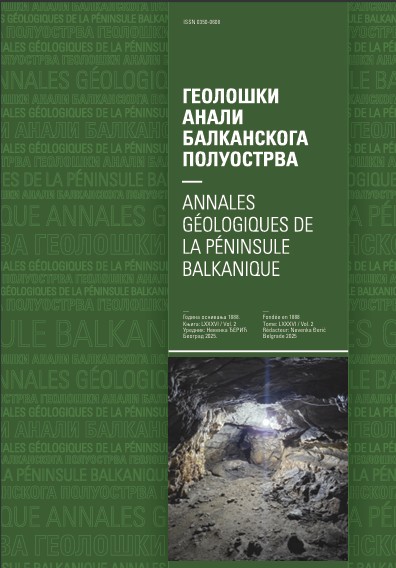From shallow-water carbonate ramp to hemipelagic deep-marine carbonate deposition: Part 2. Sirogojno (Klisura quarry) – the reference section of the Middle to Late Anisian Bulog sedimentary succession in the Inner Dinarides (SW Serbia)
Abstract
The Middle to Late Anisian sedimentary succession preserved in the Klisura quarry in Sirogojno (Zlatibor Mt., SW Serbia) preserves the most complete deepening depositional history in the Inner Dinarides of Serbia. In this section tectonic motions in the frame of the Neo-Tethys break-up are mirrored in the depositional history with exceptional well preserved details. The Pelsonian Ravni Formation at the base of the section is dissected by two age different generations of neptunian dykes formed in A) the late Pelsonian, and B) the late Illyrian. Above the late Pelsonian drowning unconformity a deeping trend of the depositional environment is mirrored by the litho- and microfacies characteristics of the more than 21 meter thick red nodular limestones of the Bulog Formation. Time spans of starvation with deposition of Fossillagerstätten beds and hardgrounds mark characteristic changes in deposition. Two phases of distinct tectonic motions result in unconformities and a stepwise deepening of the depositional realm. The first and major unconformity is the drowning of the Ravni Carbonate Ramp and the nearly total demise of shallow-water carbonate production, i.e. the change in deposition from shallow- to deep-water limestones. The second phase of tectonic motions is expressed by the formation of an angular unconformity after a phase of starvation in the basin. No Bulog Limestone section in the Dinarides, even not in the type region near Sarajevo, preserves all these characteristic sedimentological features as preseverd in the Klisura quarry section in Sirogojno. Therefore the Klisura quarry section in Sirogojno is assigned as reference section for the sedimentological evolution and depositional environment reconstruction of the Bulog Formation in the Inner Dinarides, located in SW Serbia.
Copyright (c) 2023 Geološki anali Balkanskoga poluostrva

This work is licensed under a Creative Commons Attribution 4.0 International License.










